Vietnamese Herbal Tea: 7 Delicious and Healthy Options to Try Now
Vietnam’s tropical climate creates the perfect environment for herbs to thrive, growing wild in gardens, along rice fields, and even by the roadside. For generations, Vietnamese people have turned to these herbs not only in cooking and traditional remedies, but also in everyday drinks. Herbal teas have long been a part of daily life, valued not just for their flavor, but for their place in local wellness traditions. Each herb is thought to support the body in its own way, according to long-held practices.
In this post, we’ll explore the world of Vietnamese herbal tea—the types of tea people drink often, how they’re made, what each one tastes like, and some of the wellness benefits they may offer. We’ll also share where you can find a few of these teas online if you’d like to try them at home.
What is Vietnamese herbal tea?
Top 7 Vietnamese herbal teas
FAQs
Dear reader, we enjoy Vietnamese herbal teas and personally photographed and filmed everything featured in this post. This article contains affiliate links. If you find them helpful and decide to make a purchase, it supports our website at no extra cost to you. Thank you for your support!
What is Vietnamese herbal tea?
Vietnam herbal tea refers to a wide range of caffeine-free drinks made from the leaves, stems, roots, or flowers of local herbs. These teas are commonly found in everyday life and traditional practices. While each herb brings its distinct aroma and flavor, many Vietnamese people also believe that different plants offer different health benefits—an idea that comes from centuries of folk medicine.
For example, when feeling stressed, someone might step into the garden, pull up a few stalks of lemongrass, and simmer them into a soothing tea. On chilly mornings or when facing a scratchy throat, a warm cup of ginger tea with honey is a common go-to. Herbal teas like these are simply part of everyday life in many Vietnamese homes. When there’s an abundance of fresh herbs, people often dry the extra to store and use later, especially during the rainy season or when certain herbs are harder to find.
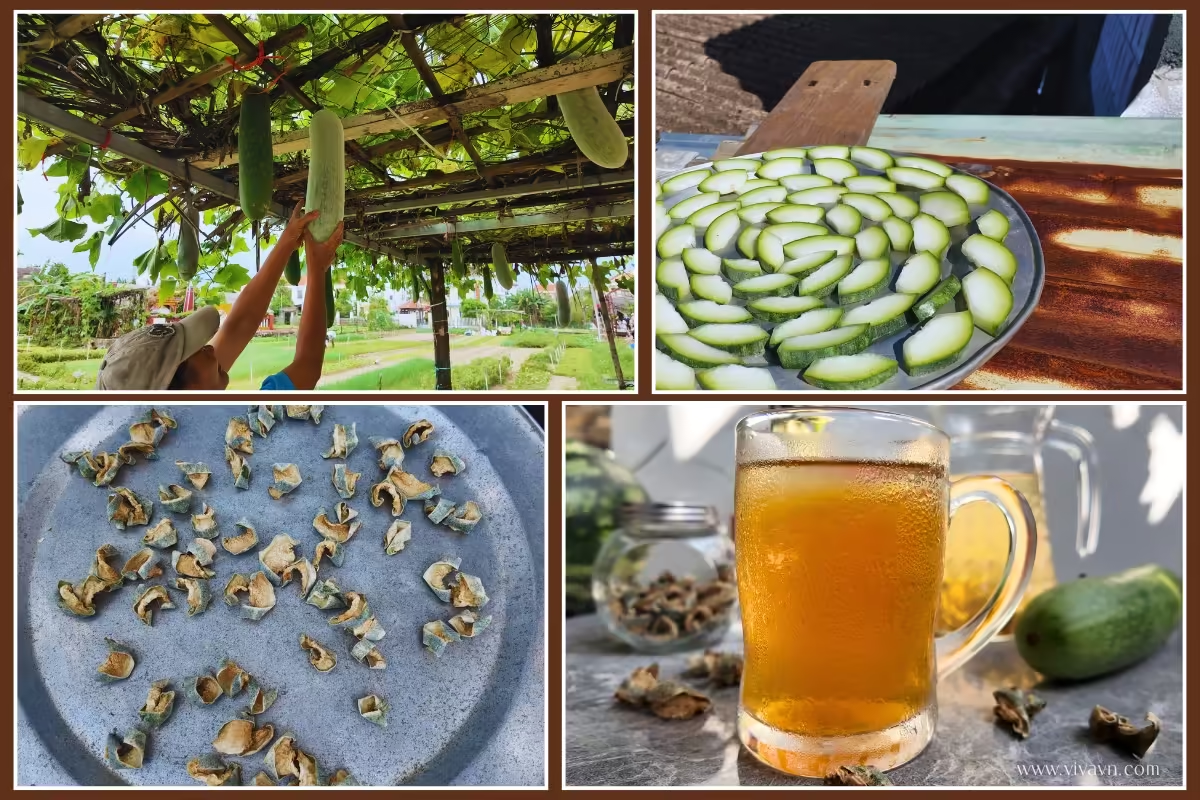
How winter melon tea is made in Vietnam—starting in the garden and ending in a glass, with nothing but sun, patience, and a little rock sugar.
Premium Vietnamese Herbal Tea
Affiliate Disclosure: We may earn a commission if you make a purchase through our links.
Top 7 Vietnamese herbal teas you should try
Before we dive into each tea, please note that the health effects we mention are based on generations of traditional and folk knowledge, and should be viewed as cultural insights rather than medical advice.
Hibiscus flower tea
Vietnamese name: Tra atiso do
Used part: Fresh or dried flower calyces
Flavor profile: Tart and fruity
Served: Iced, often with honey
Traditional belief: Supports healthy skin, improves sleep, and slows signs of aging
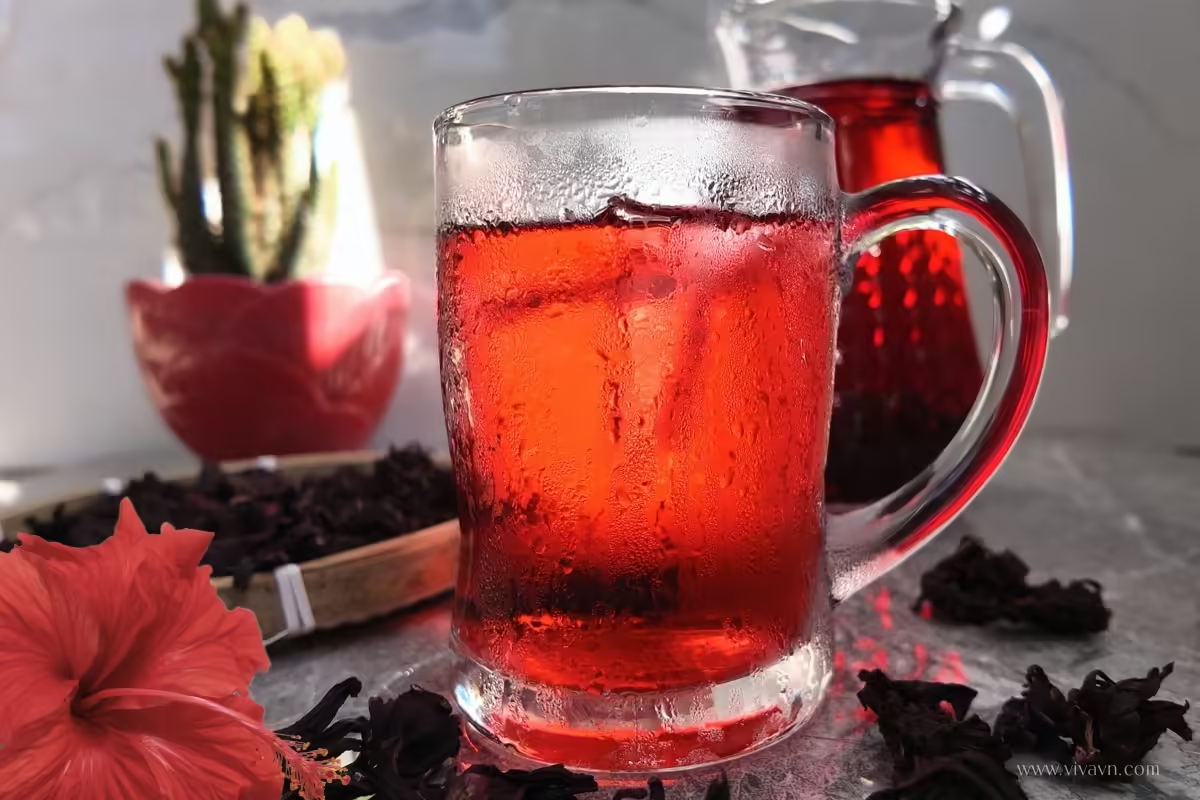
A chilled glass of Vietnamese hibiscus tea made from dried roselle flowers
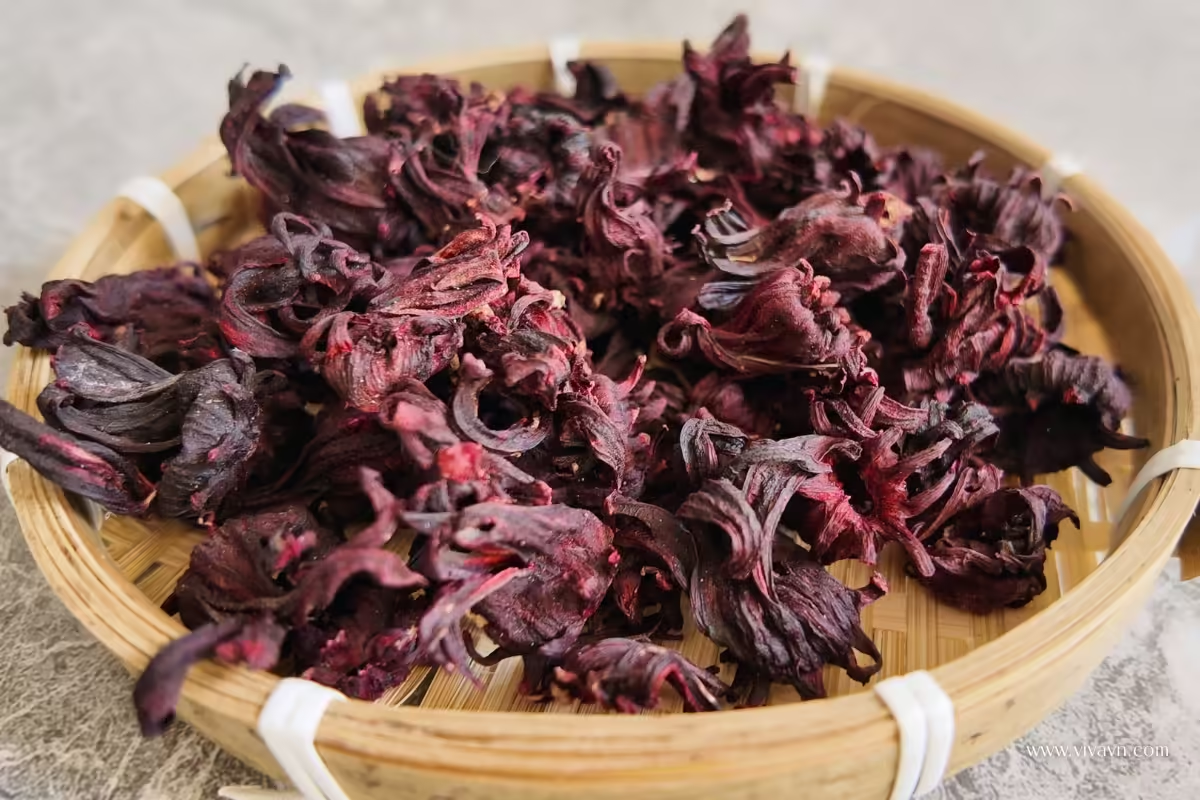
Sun-dried hibiscus flowers—ready for brewing into a vibrant, tart herbal tea.
Premium Hibiscus Tea Bags
Affiliate Disclosure: We may earn a commission if you make a purchase through our links.
With its vibrant red color and tart, fruity taste, hibiscus flower tea has become a favorite herbal drink in Vietnam. The hibiscus plant, which grows well in the country’s tropical climate, produces striking deep-red calyces that appear each year during harvest season. Around this time, it’s common to see large baskets of fresh hibiscus flowers at local markets, especially in rural areas.
The tea can be made using either fresh or dried hibiscus calyces. To prepare it, just steep the flowers in hot water for 10 to 15 minutes until the water turns a bright ruby red. The flavor is naturally tangy and refreshing. Many people balance the sourness with a spoonful of honey, and it’s often served over ice on warm days.
In Vietnamese folk tradition, hibiscus tea is believed to support healthy skin, promote better sleep, and help slow signs of aging.
Butterfly pea flower tea
Vietnamese name: Tra hoa dau biec
Used part: Fresh or dried flowers
Flavor profile: Mildly floral, slightly sour when citrus is added
Served: Iced with honey or sugar and lime
Traditional belief: Promotes relaxation and better sleep
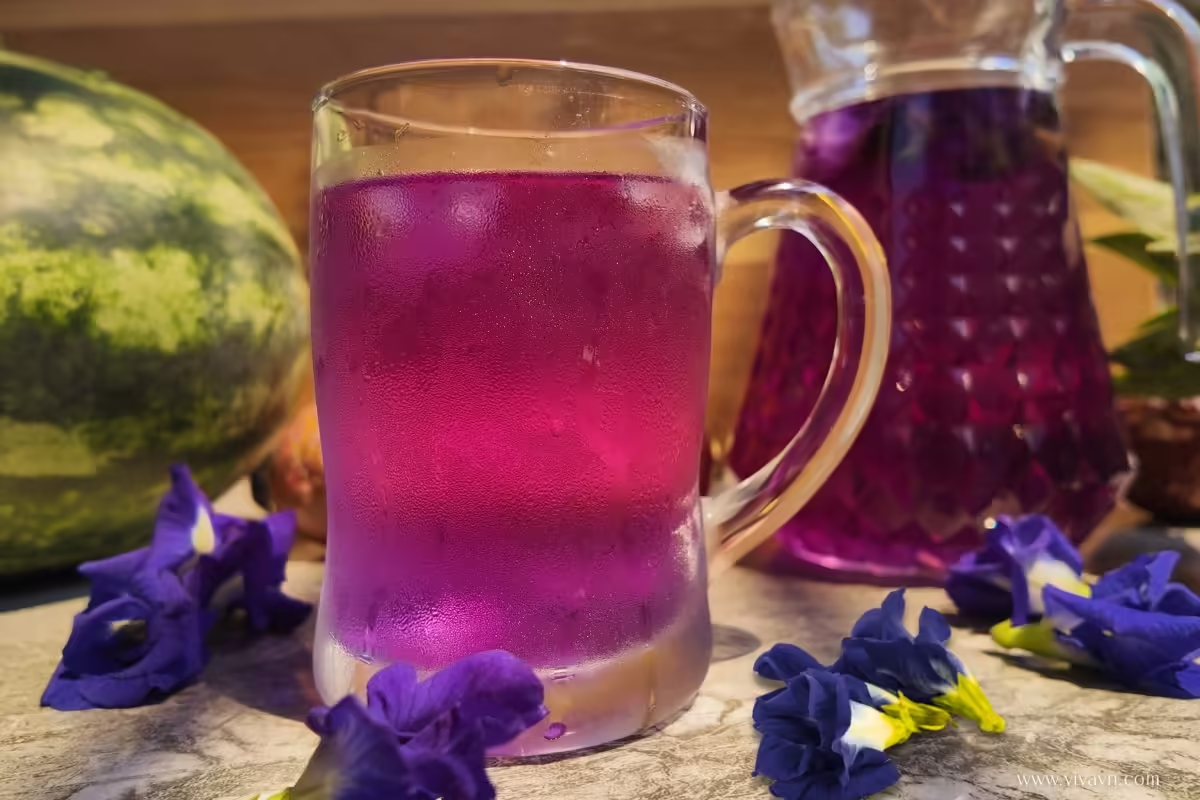
Butterfly pea tea with lime and honey—lightly chilled, naturally vibrant, and gently floral.
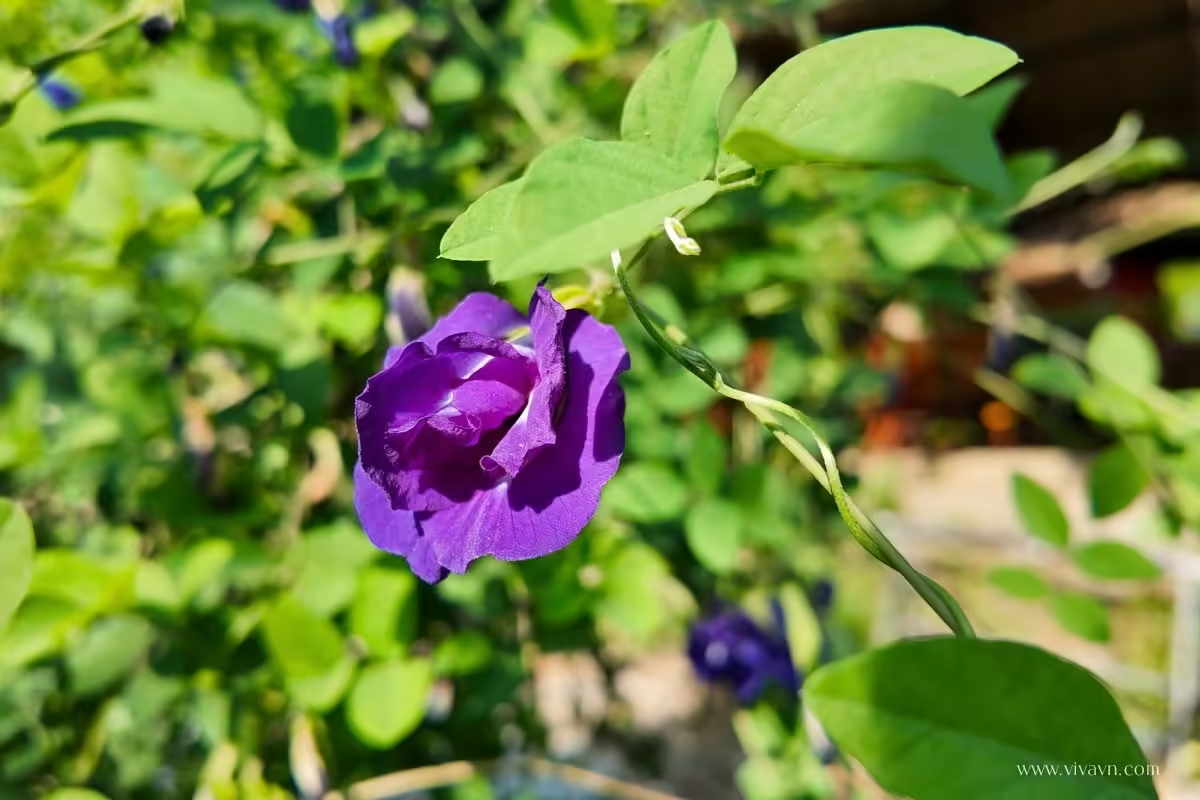
Butterfly pea flower—beautifully vibrant and often brewed into colorful herbal tea.
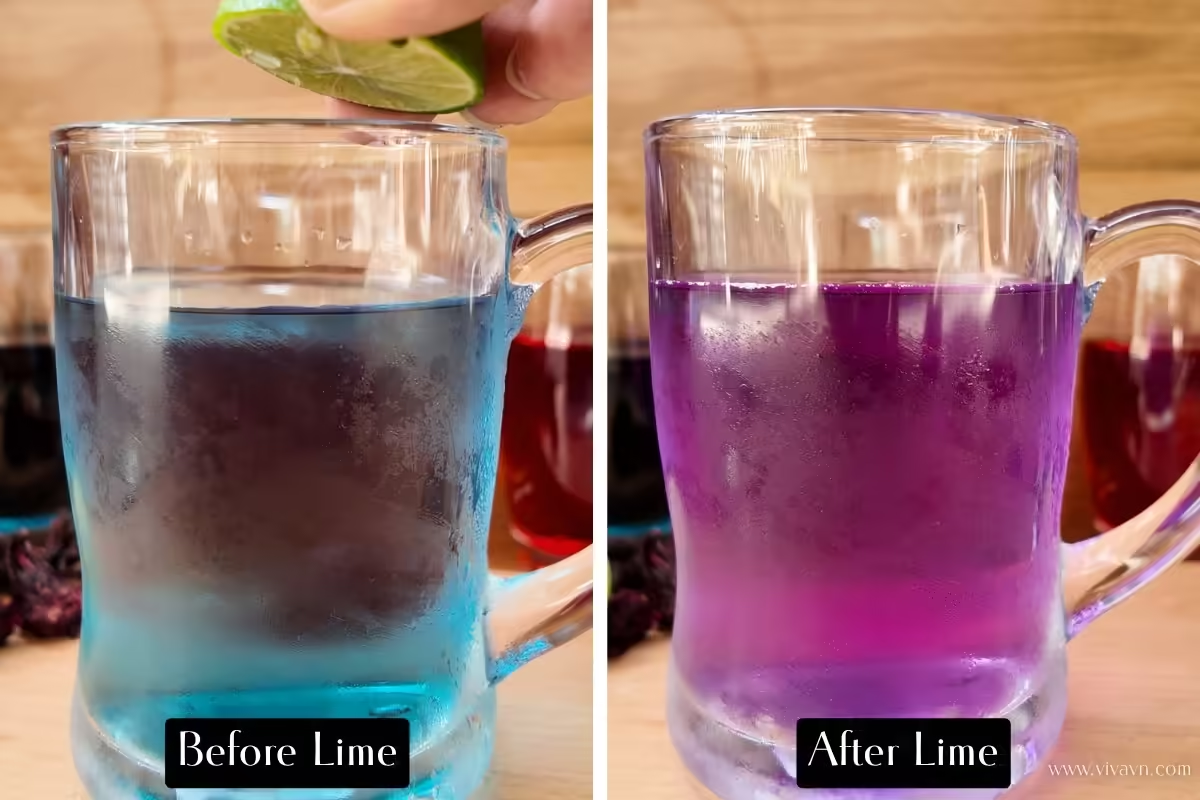
Butterfly pea tea before and after lime juice.
With its vivid blue petals, the butterfly pea flower isn’t just visually striking—it’s also used in Vietnam to brew herbal tea. The tea can be made using either fresh or dried flowers, steeped in hot water until the deep blue color is released.
One of the most fascinating traits of butterfly pea tea is how it changes color when mixed with citrus. Add a few drops of lime or lemon juice, and the blue turns into purple. The flavor becomes lightly tangy, sweet from honey or sugar, and pleasantly cooling when served over ice. It’s a refreshing drink with a gentle taste—slightly floral, mildly sour, and sweet.
According to traditional Vietnamese beliefs, butterfly pea tea is thought to support relaxation and better sleep.
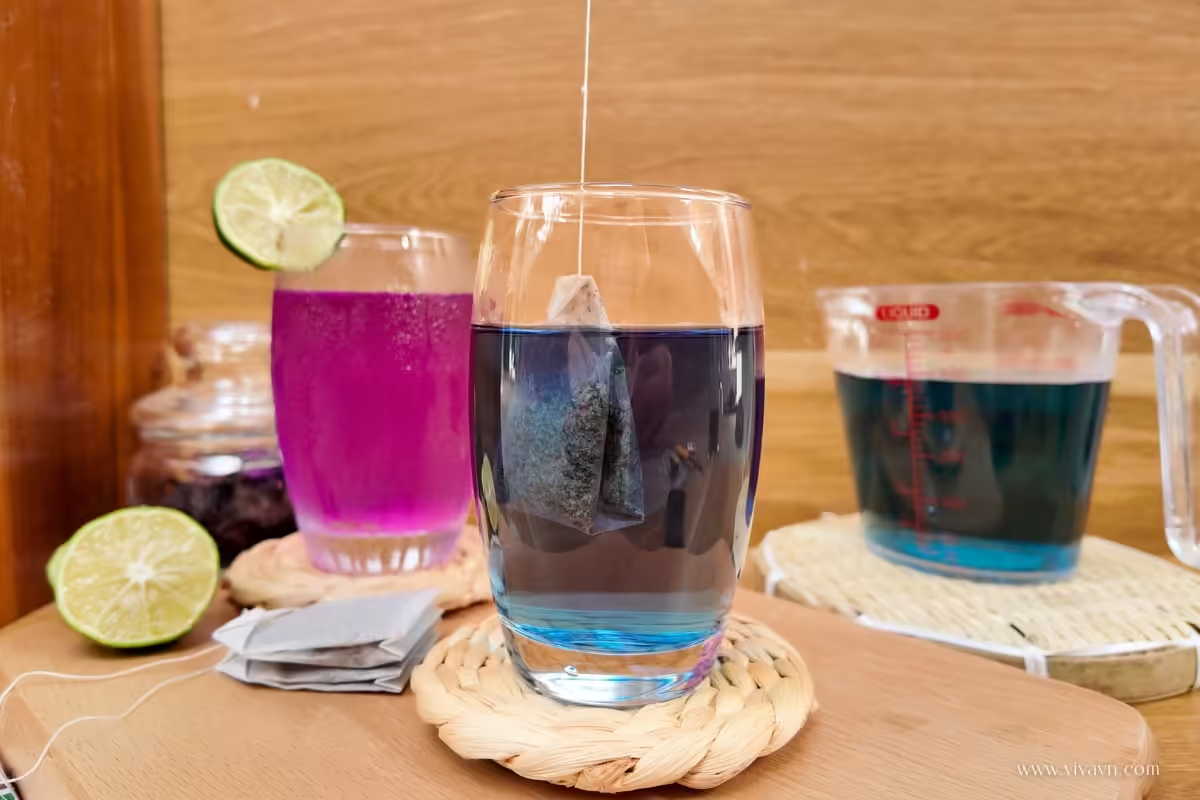
This butterfly pea flower tea is brewed using convenient tea bags.
Premium Butterfly Pea Tea – See Today’s Price
Affiliate Disclosure: We may earn a commission if you make a purchase through our links.
Winter melon tea
Vietnamese name: Tra bi dao
Used part: Sun-dried melon slices
Flavor profile: Sweet and mellow with herbal aroma
Served: Iced
Traditional belief: Helps cool the body and gently detoxify
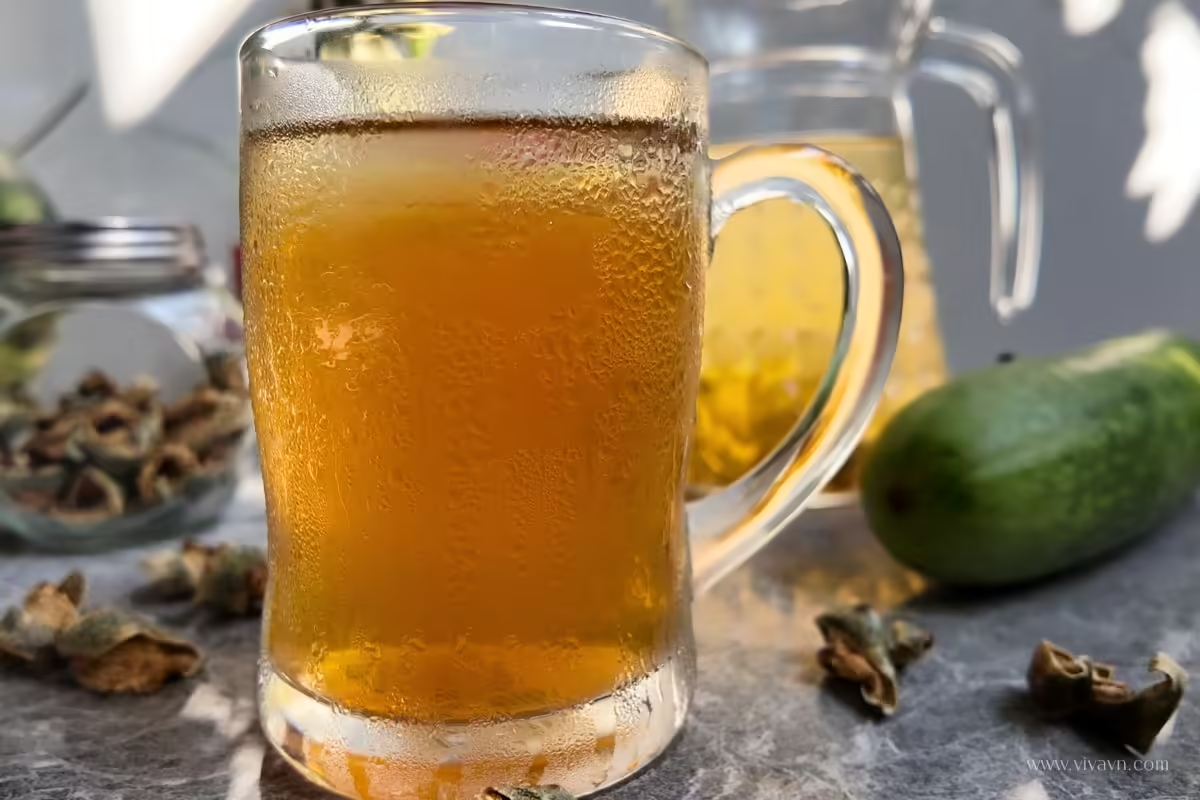
Vietnamese winter melon tea—served cold for a gentle, refreshing sip
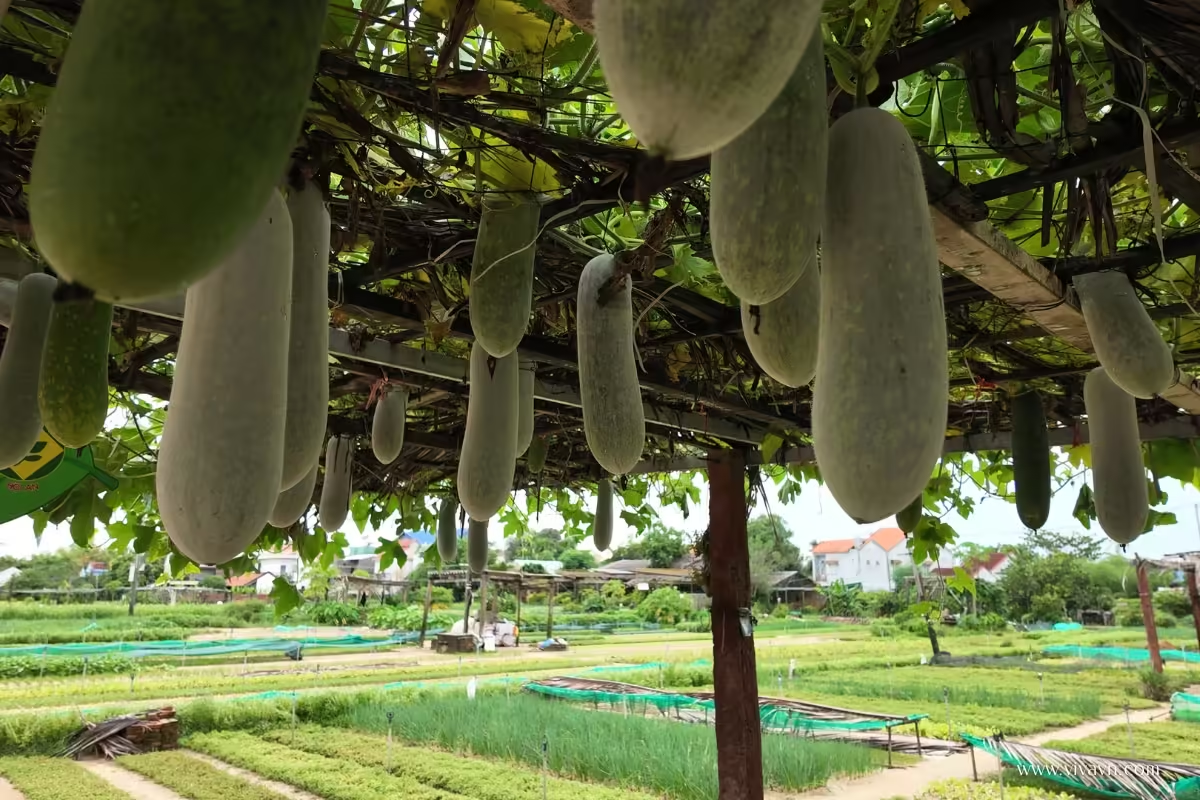
Winter melons hang from a vine trellis in a traditional Vietnamese garden
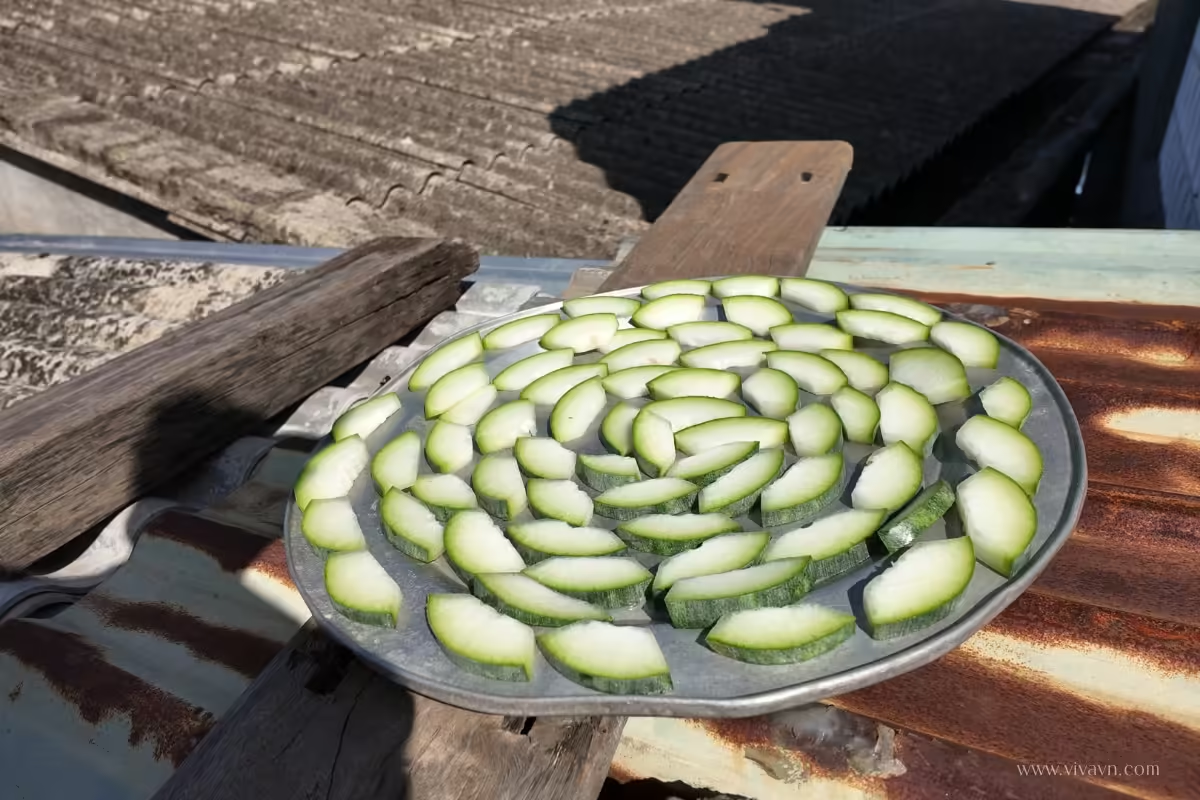
Fresh winter melon slices drying under the sun—an essential step to develop flavor and preserve them for tea making.
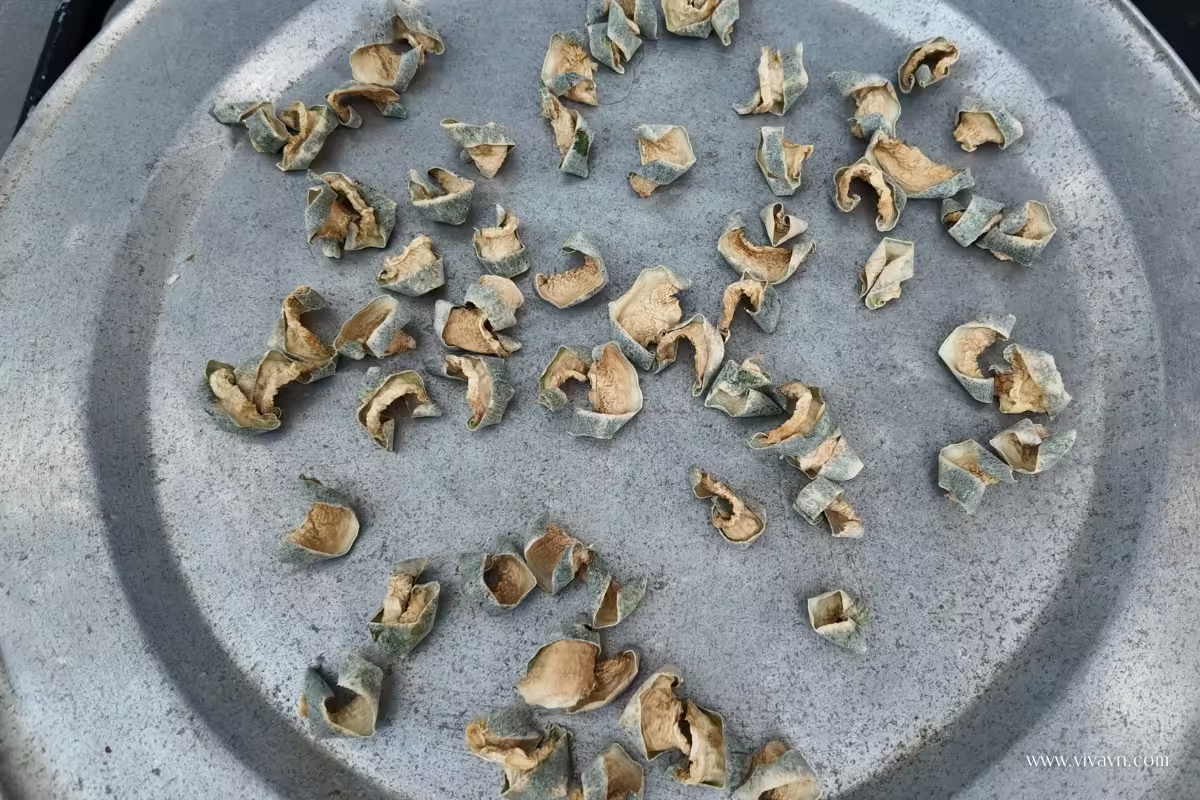
Fully sun-dried winter melon slices
Winter melon is a climbing vine native to South and Southeast Asia. Its fruit is long and cylindrical, with a pale green rind and soft, white flesh. In Vietnam, winter melon is commonly used in soups, desserts, and beverages for its mild, watery taste and natural cooling effect.
To make winter melon tea, mature fruits are washed, sliced, and sun-dried. Once dried, the slices are lightly roasted to enhance their flavor. The tea is prepared by simmering the melon with rock sugar for over an hour, resulting in a golden-brown infusion with a sweet, mellow taste and a gentle herbal aroma.
In Vietnam, winter melon tea is often enjoyed during the summer, typically served cold over ice. Many people drink it not only for its naturally mild, sweet taste but also because it’s traditionally believed to help cool the body and support gentle detox. If you’d like to learn more about this ingredient, feel free to explore our full post on Vietnamese winter melon.
Cinnamon tea
Vietnamese name: Tra que
Used part: Dried cinnamon bark
Flavor profile: Warm, spicy-sweet
Served: Warm with honey
Traditional belief: Soothes the senses and lifts the mood
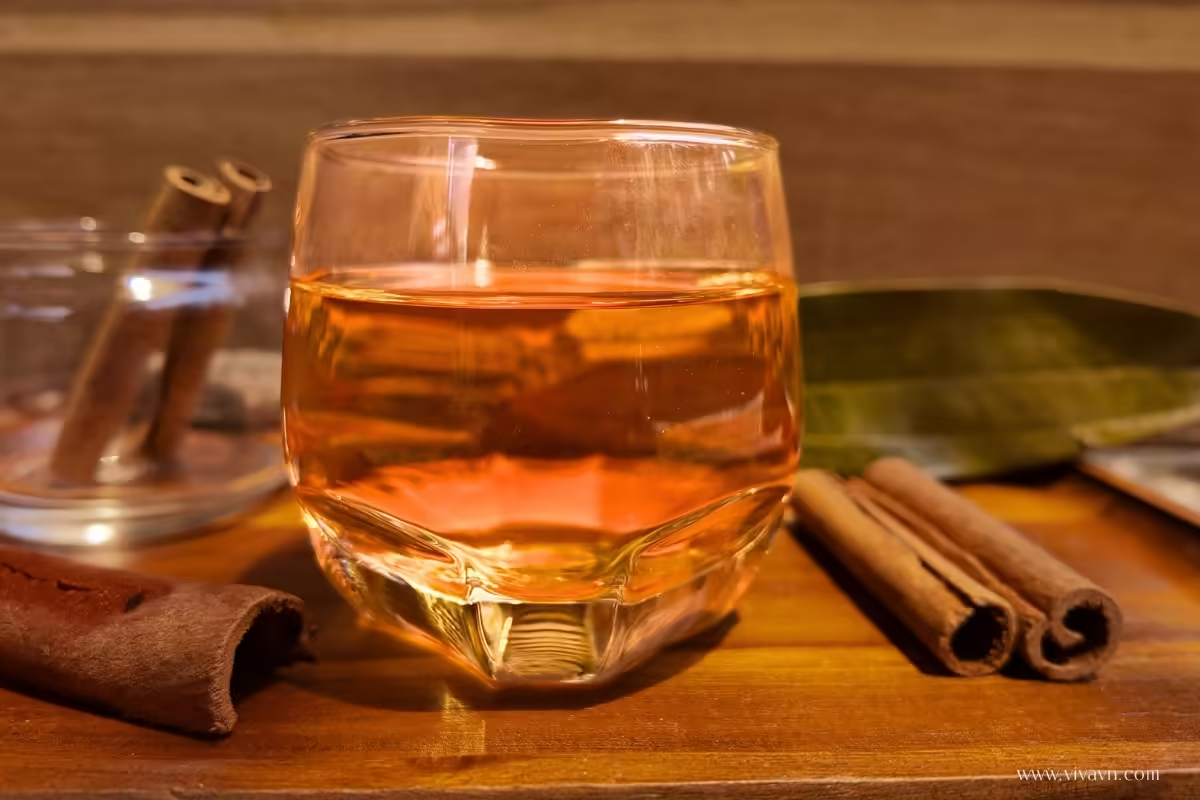
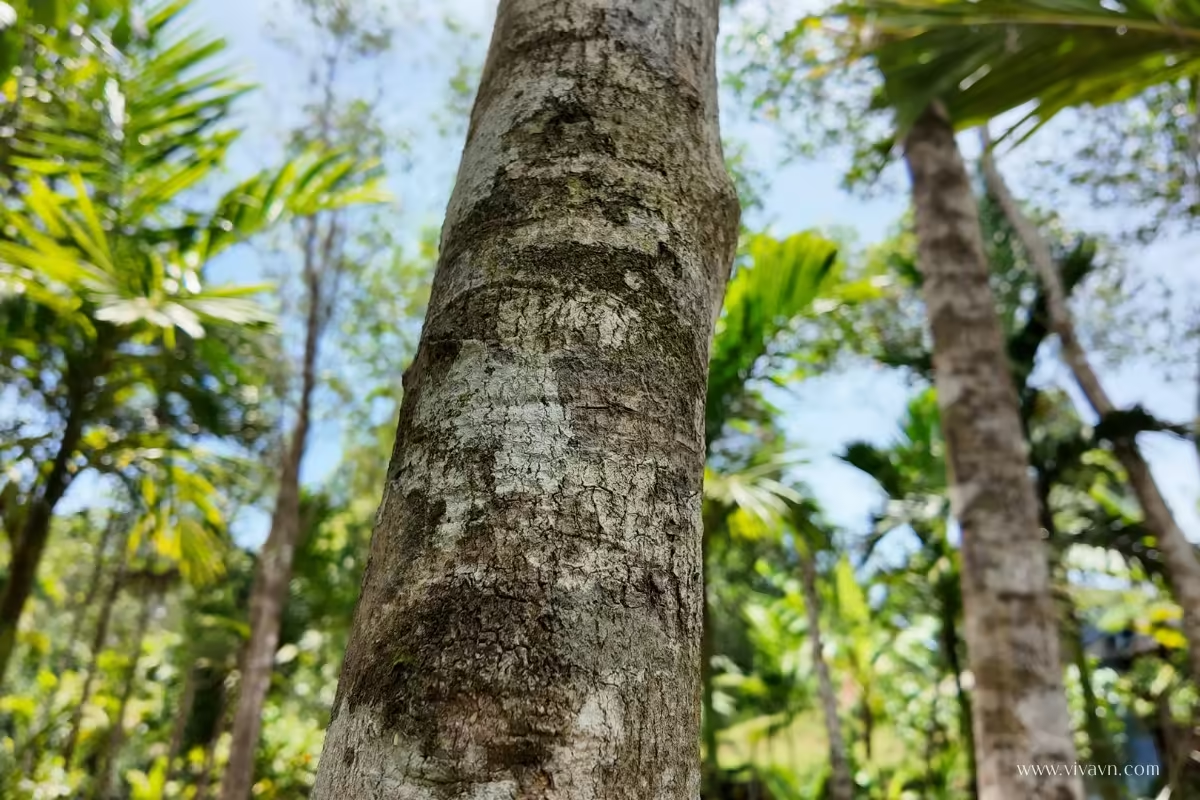
Close-up of cinnamon tree bark in Vietnam.
Vietnam is home to one of the world’s most prized varieties of cinnamon: Saigon cinnamon, known for its bold, spicy-sweet flavor and rich aroma. Compared to the more delicate Ceylon cinnamon, Vietnamese cinnamon is warmer, deeper, and more intense.
To make Vietnamese cinnamon tea, a few sticks of cinnamon are gently simmered in hot water for about 10 minutes, then left to steep so the full aroma can unfold. A spoonful of honey is often added for natural sweetness.
Served warm in a simple glass, it is a comforting herbal drink that soothes the senses and is often enjoyed as a gentle mood booster.
Vietnamese Pennywort tea
Vietnamese name: Tra rau ma
Used part: Dried leaves
Flavor profile: Mildly bitter, grassy, with a sweet finish
Served: Warm or iced with honey or lemon
Traditional belief: Supports digestion, cools the body, and promotes clearer skin
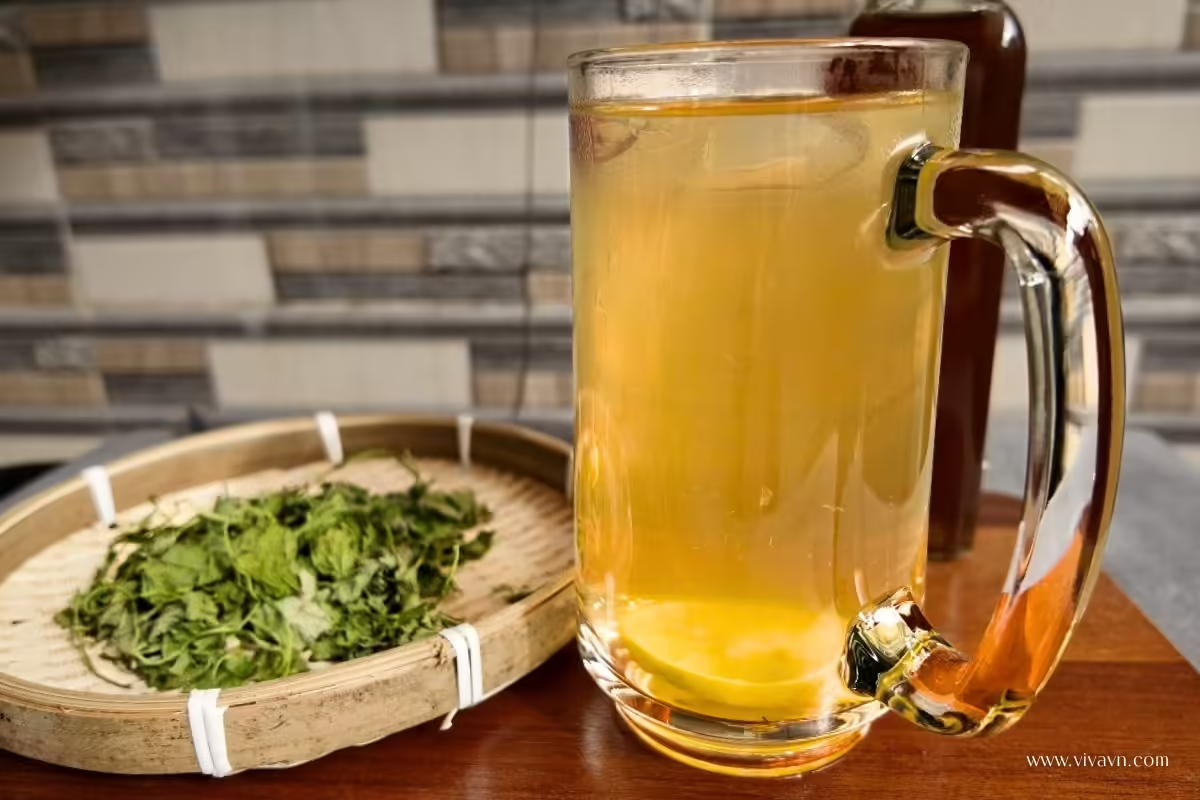
Refreshing Vietnamese pennywort tea with honey and dried leaves
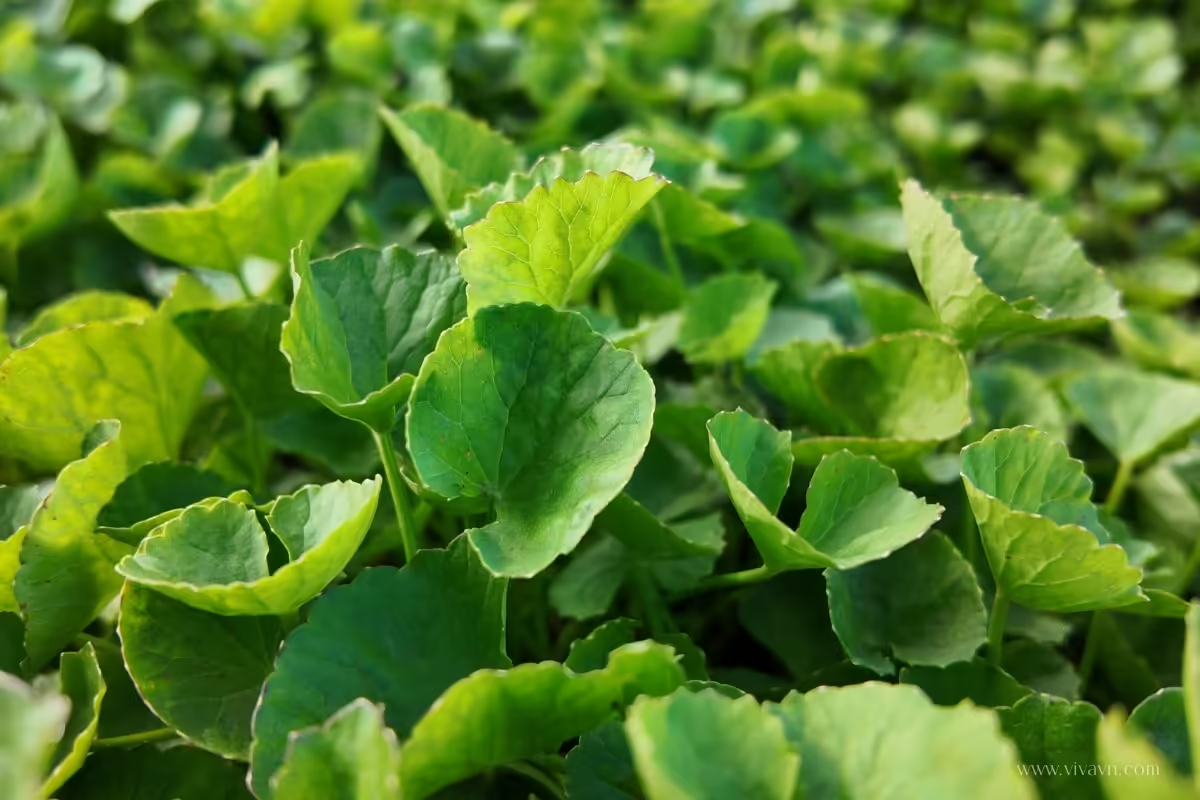
Fresh pennywort leaves growing in a Vietnamese garden
Found across gardens and fields in Vietnam, pennywort—also known as gotu kola—is a beloved herbal plant that often forms a lush, green carpet close to the ground. It has a mildly bitter taste with a clean, grassy aroma, and often leaves a gentle sweetness after each taste. In Vietnam, pennywort is used in a variety of everyday dishes, from refreshing soups and salads to smoothies and herbal teas.
To make pennywort tea, the leaves are sun-dried, then simmered in hot water for 5 to 7 minutes until the brew turns an earthy golden-brown. The tea is then strained and served either warm or chilled, depending on the season. A touch of honey and a slice of lemon bring out its fresh, grassy notes.
In Vietnamese folk medicine, pennywort has long been valued for its cooling nature. It’s traditionally believed to support digestion, promote clearer skin, and help the body stay balanced during hot weather. If you’d like to explore further, we’ve put together a full post on Vietnamese pennywort.
Lemongrass tea
Vietnamese name: Tra sa
Used part: Lower stalks of fresh lemongrass
Flavor profile: Citrusy, slightly peppery, light, and refreshing
Served: Warm, sometimes with honey and lemon
Traditional belief: Aids digestion, eases cold symptoms, and calms the mind
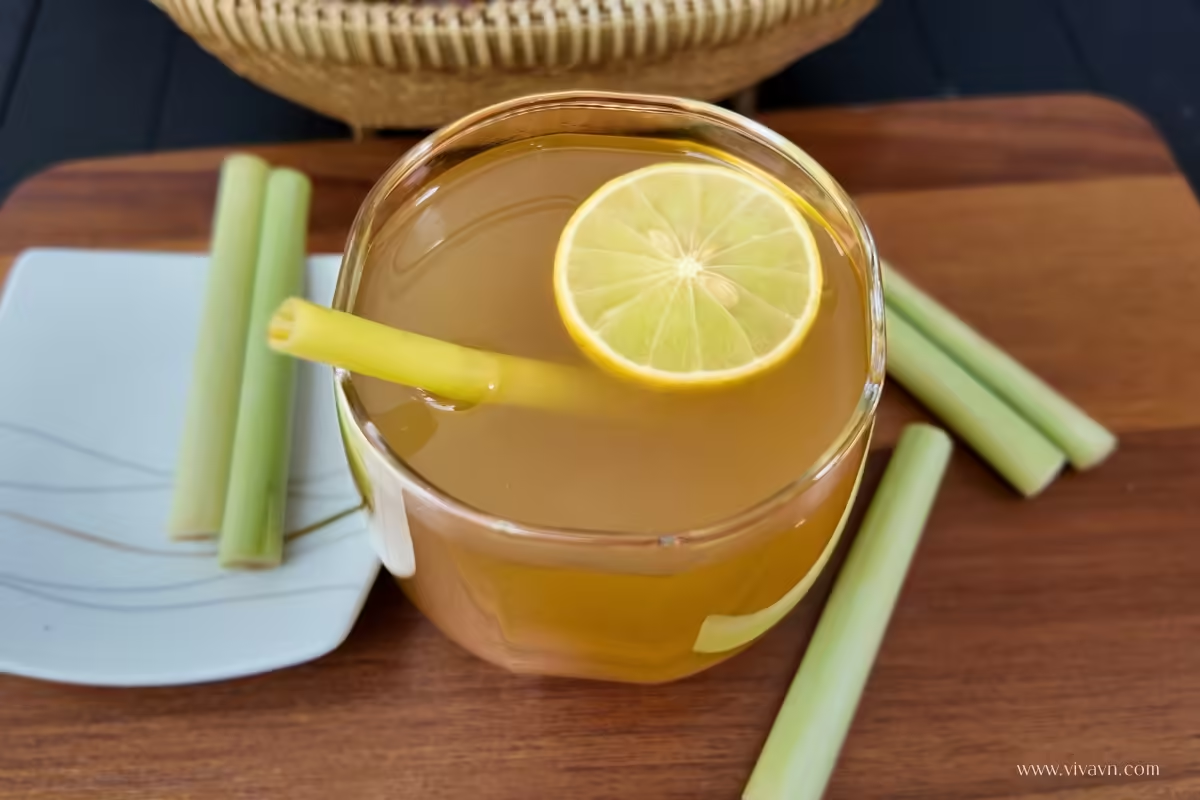
A soothing glass of lemongrass tea—gently simmered with fresh stalks, sweetened with honey.
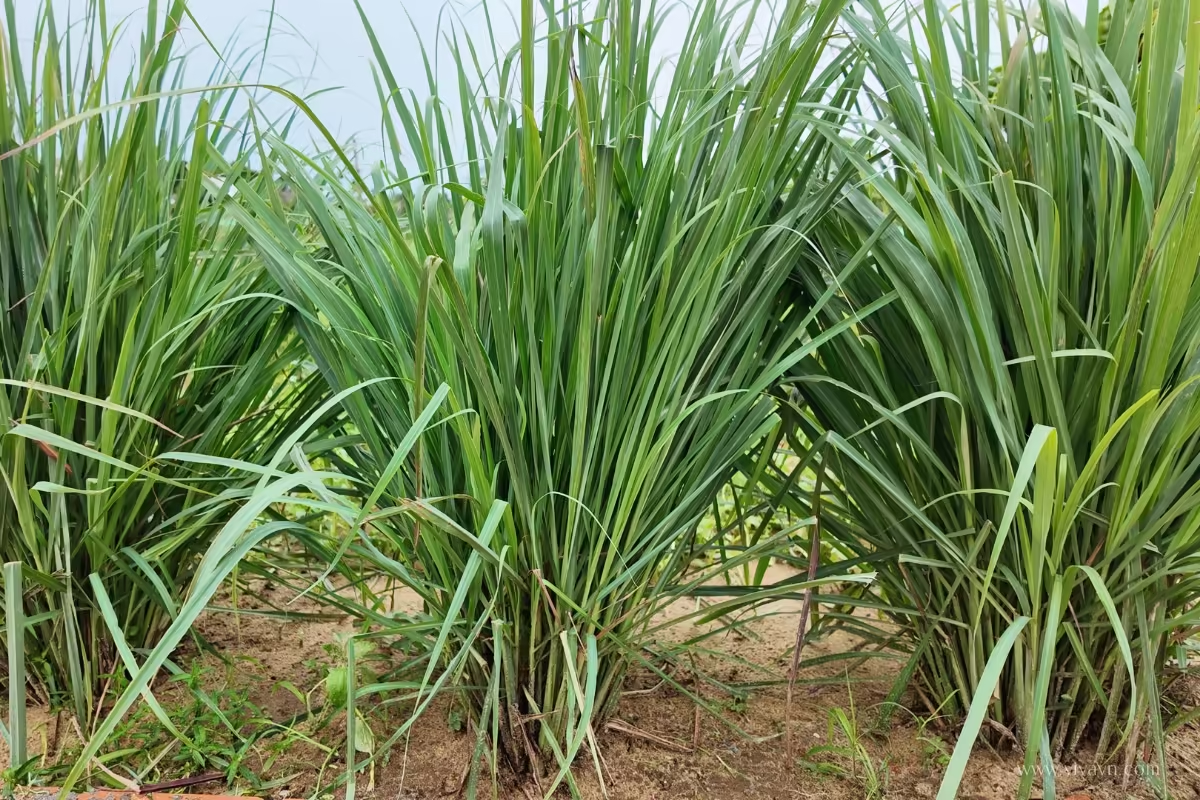
Lemongrass plants growing in a Vietnamese herb garden
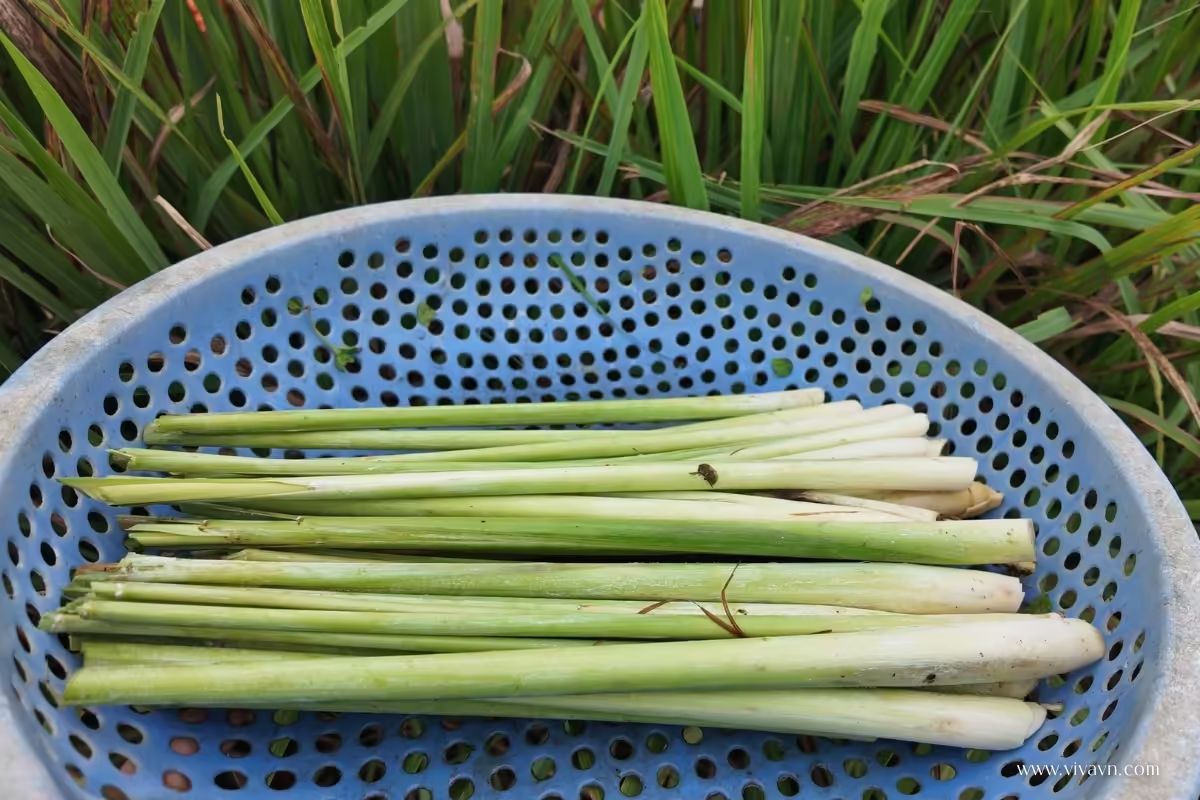
Freshly harvested lemongrass stalks
Lemongrass is a tropical herb commonly grown across Southeast Asia, including in Vietnam. It grows in clusters of tall, slender stalks and has a fresh, citrusy aroma with a slightly peppery note. The lower part of the stalk is where the flavor is strongest and is often used in cooking as well as in tea.
To make lemongrass tea, fresh stalks are trimmed, lightly crushed, and gently simmered in water to release their essential oils. A spoonful of honey and a squeeze of lemon juice are often added. The result is a light, fragrant tea with a delicate citrus finish—perfect as a calming drink after meals or a soothing ritual at the end of a long day.
In Vietnam, lemongrass tea is often sipped warm, especially during cooler days or when someone feels under the weather. According to folk traditions, it’s believed to help ease digestive discomfort and mild cold symptoms. Its bright, citrusy aroma is also thought to promote a sense of calm and relaxation.
Perilla leaf tea
Vietnamese name: Tra tia to
Used part: Fresh or dried leaves
Flavor profile: Earthy, slightly spicy, and fragrant
Served: Warm
Traditional belief: Traditionally used to ease colds, reduce stress, and warm the body
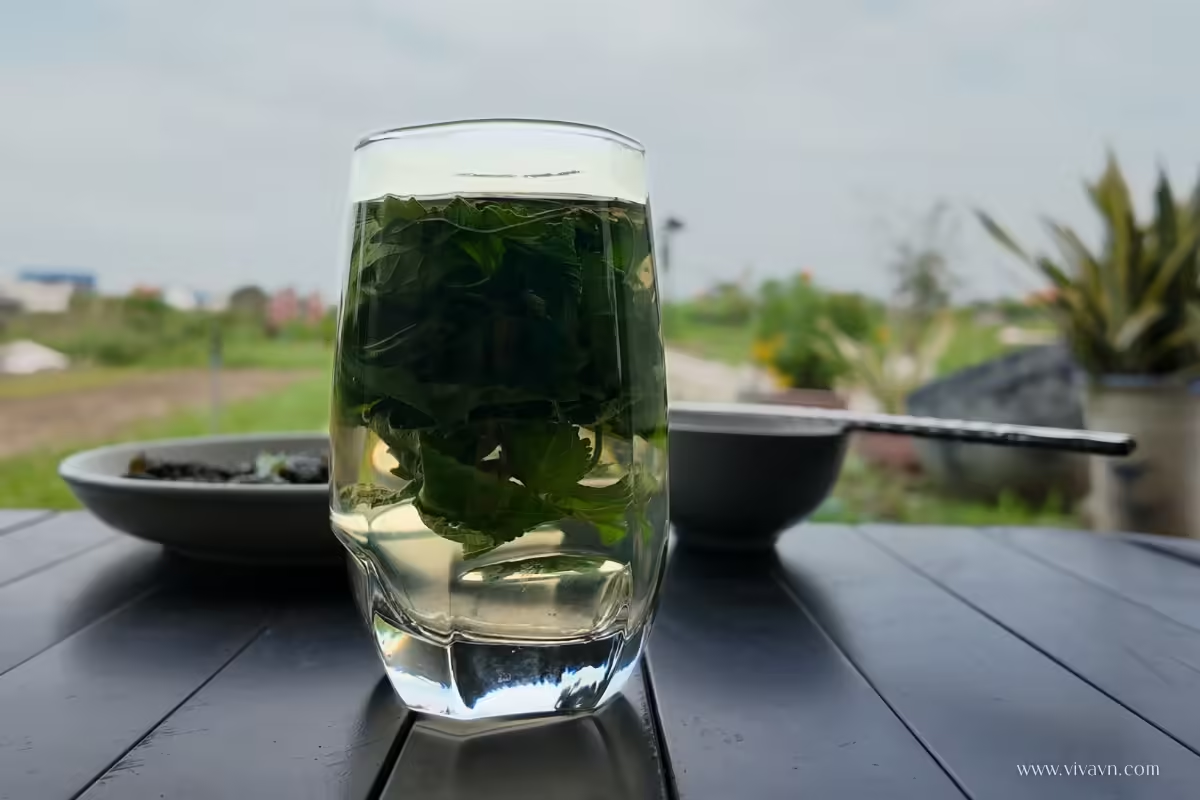
A soothing cup of perilla tea brewed from fresh leaves
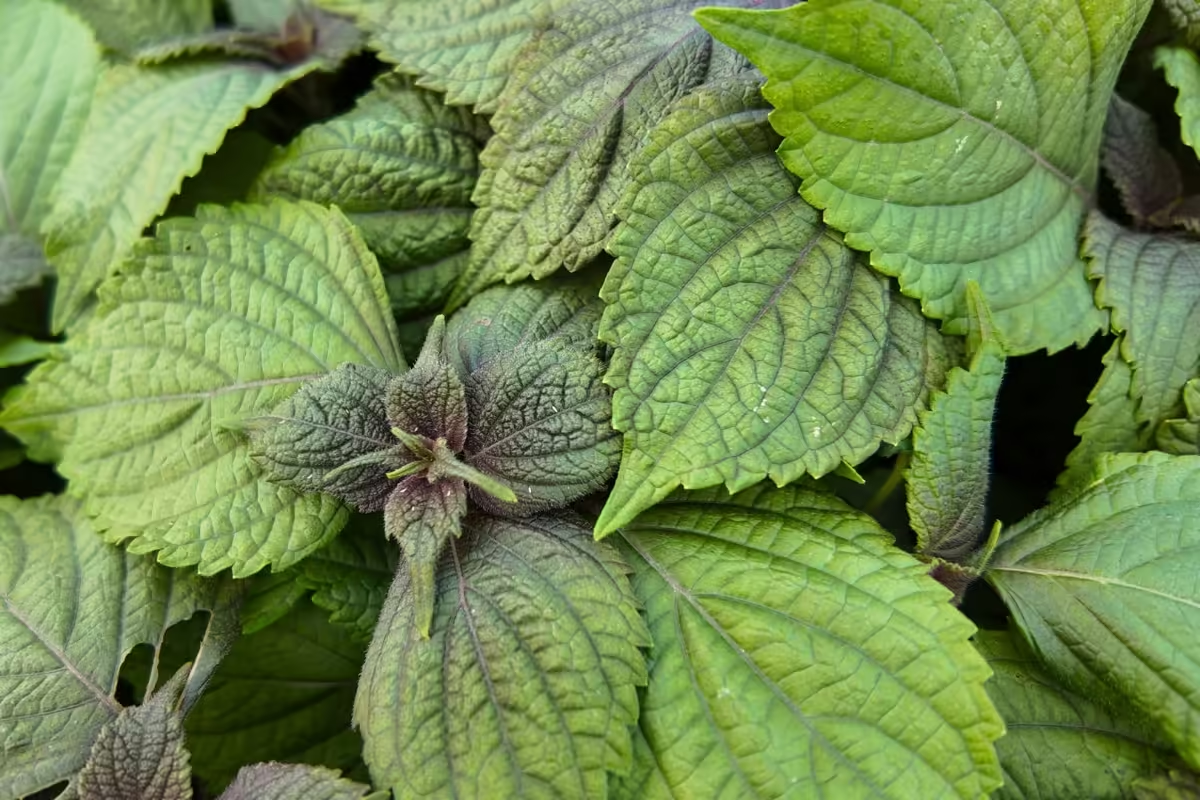
The green tops of Vietnamese perilla leaves, known for their slightly serrated edges and unique herbal aroma.
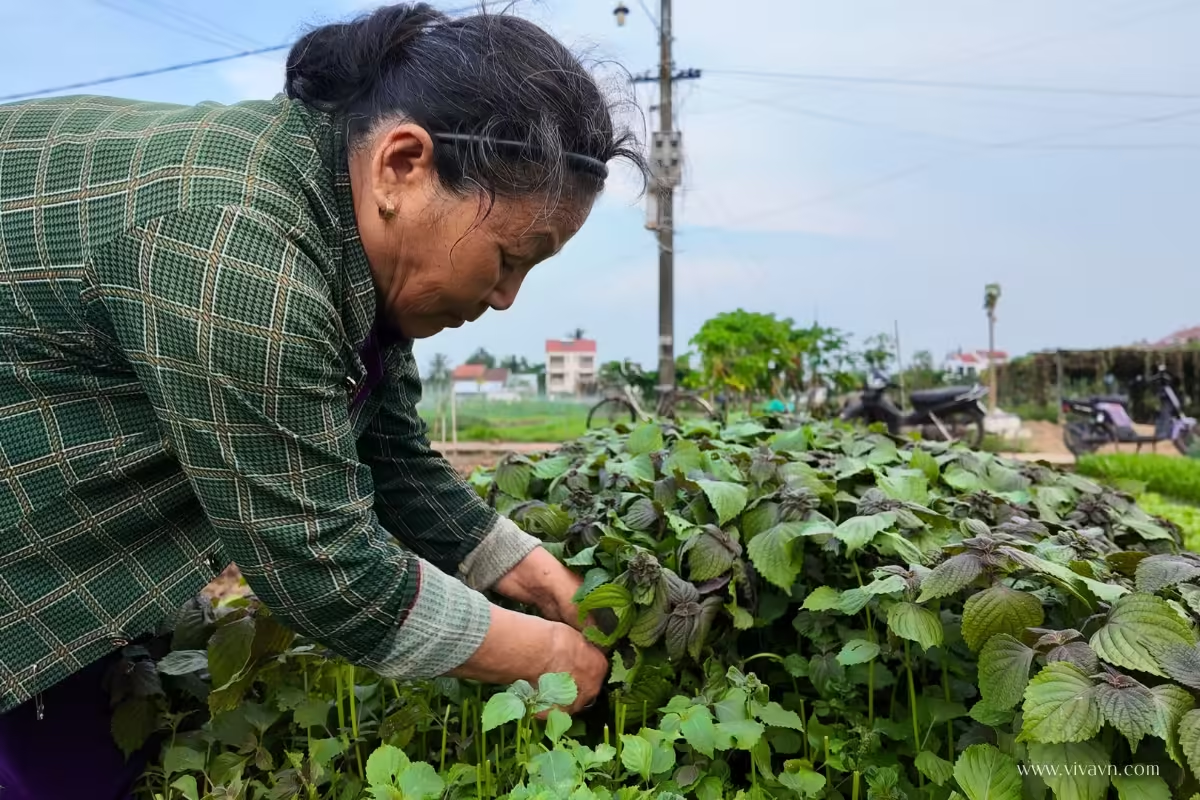
A Vietnamese woman gathers fresh perilla leaves from her garden
Perilla is a widely grown herb in Vietnam, valued for its fragrant, slightly spicy leaves that are used in both cooking and traditional remedies. You’ll often see it in markets or home gardens, where its purple-tinged, ruffled leaves stand out among other herbs.
In Vietnam, perilla tea is made from fresh, dried, or even powdered leaves, depending on what’s available. On a stressful day, it’s common for someone to simply step outside, pick a handful of fresh leaves, rinse them, and steep them in hot water. The result is a light herbal infusion with a gentle aroma and a subtle, earthy flavor that many find calming and grounding.
We’ve written more about Vietnamese perilla—its traditional uses, herbal tea, and everyday role in local cuisine—right here.
Frequently asked questions about Vietnamese herbal teas
Are Vietnamese herbal teas caffeine-free?
Yes, most Vietnamese herbal teas are naturally caffeine-free. They’re made from various parts of plants—like lemongrass (stalk), hibiscus (flower calyces), winter melon (fruit), butterfly pea (flowers), cinnamon (bark), pennywort (leaves), and perilla (leaves)—making them a soothing, herbal alternative to regular tea or coffee.
Which Vietnamese herbal tea is best for hot weather or summer?
In Vietnam, herbal teas like winter melon, pennywort, hibiscus, and butterfly pea flower are often enjoyed during the hot summer months. These herbal drinks are typically served over ice and are valued for their naturally light, refreshing taste. In Vietnamese tradition, they’re also believed to have gentle cooling properties that help the body stay balanced in the heat.
Do Vietnamese herbal teas have any health benefits?
Vietnamese herbal teas are deeply rooted in folk traditions and are often enjoyed not just for their flavor, but also for their believed calming and cooling effects. While not backed by modern clinical research, many of these teas have been used for generations to help ease stress, promote restful sleep, and support the body during hot weather.
What’s the best way to brew Vietnamese herbal tea?
It depends on the herb, but a general method is to simmer or steep the dried or fresh leaves, flowers, or fruit slices in hot water for 5 to 15 minutes. Some teas, like winter melon or lemongrass, are often simmered longer for deeper flavor. Sweeteners like honey or rock sugar can be added to taste, and many herbal teas are delicious both warm and iced.
Share on FacebookShare on X (Twitter)Share on PinterestShare on WhatsappShare on LinkedinShare on TelegramShare on Email
- https://www.youtube.com/@VivaVNOfficial
- https://www.facebook.com/vivavnofficial2024
- https://www.pinterest.com/vivavnofficial/
© 2025 VivaVN. All rights reserved.




Leave a Reply